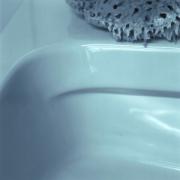Candidate Sperm Choice Adaptations in Yellow Dung Flies revealed by Fluid Dynamics Simulations
The mechanisms regulating sperm transfer, storage, and use in insects are unclear, even in well-studied species like the yellow dung fly (Scathophaga stercoraria). We use finite element methods and fluid dynamics theory to model sperm flow within female flies. With the help of software (http://user.math.uzh.ch/wuest/jcfd/) specially developed for this problem, we study four geometric aspects of female reproductive anatomy that may influence rates of ejaculate flow: spermathecal duct length, diameter, curvature, and the smoothness of the inner duct wall. In the parameter space defined by naturally observed variation in these traits, we find that spermathecal duct length and curvature have a small effect relative to duct smoothness and especially duct width. These findings will help to direct future research on the adaptive significance of variation in female reproductive tract morphology, and represent a novel contribution of fluid dynamics theory to sexual selection research.



